All about optics [Part 1]
Light, that radiation that illuminates our life and makes us see objects and different colors and enjoy the beautiful landscapes.
Light is all that affects the eye, which is responsible for the sense of sight, where the objects are seen after the eye receives the light coming from them; there are luminous objects in themselves and lighted objects that reflect the refracted light and the sun is considered as the main source of light on the globe in addition to other sources such as lightning, stars, fireflies and Luminous plankton....etc. But! what is the nature of this light? And how does it spread so fast? what is the relationship between light and colors and How does the rainbow form? how do our eyes see? what makes mirrors reflect images and how? Do we see objects in their real dimensions?How did scientists reach the principle of making optical communication devices and making lenses that help people to see more clearly? What science is interested in studying the nature of light and vision?
source: pixabay
You may have wondered in your mind before about all this, and maybe not! but in this series of articles we will talk about all this and more, you may find many concepts here that you have not previously known about light and vision, and perhaps you will benefit us by adding new information in the comments, what is sure is that each of us will learn more.
- LIGHT AND PHYISCS:
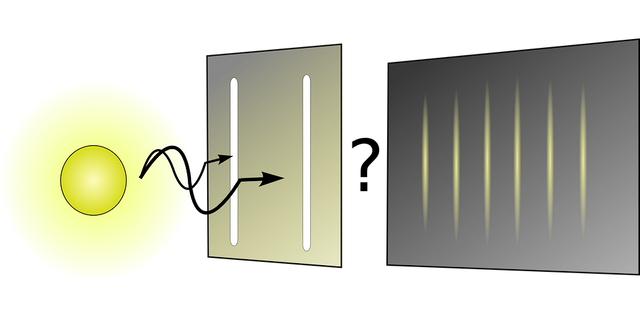
Source: pixabay
Optics is the branch of physics that is interested in luminous phenomena.
-Genrally optics is divided into three broad subfields of study:
Geometrical optics:
It is the study of light as rays, it is concerned with the trajectory of rays of light in transmission, refraction and reflection through different materials.Physical optics:
It is the study of light as waves, it concerned about the nature of light, its emission and its properties.Quantum optics:
It is the study of light as particles by using quantum-mechanical physics to study phenomena involving light and its interactions with matter at submicroscopic levels.
- In this series of articles we’ll be exploring each of the branches in more detail, and also discussing some of the applications.
- HISTORICAL:
The word optics derived from the Greek word «Τα ὀττικά», wich means appearance or look.
Philosophers and scientists have been interested in optics since the age of BC, the Greek philosopher imbidocles( ΈμπεδοΚλής) supposed in the fifth century BC that the goddess Aphrodite made the human eye of fire, air, water and earth and made the fire come out of the eyes; and he thought that a person can see when the rays that come out of the eye interact with the rays that come out of the objects.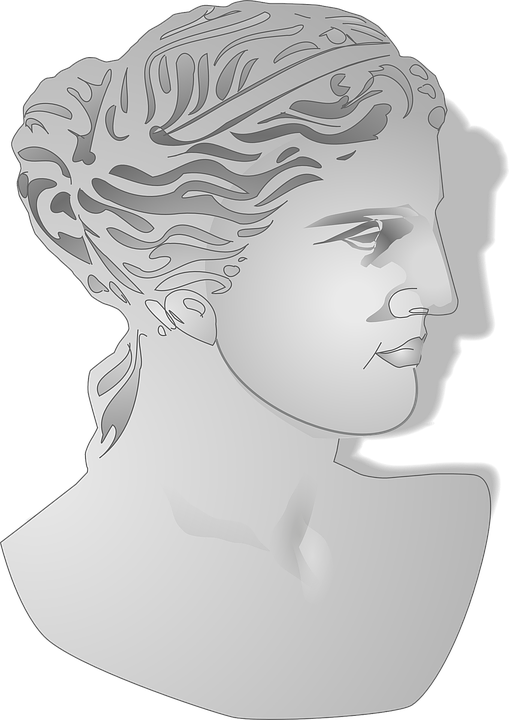
Source: pixabay
In the year BC, Euclid also studied the virtual shapes of the cylinders and cones when viewed from different angles. He was the first to write in the geometry of optics and identified several important theories, he demonstrated that the light source sends straight rays in a conical shape: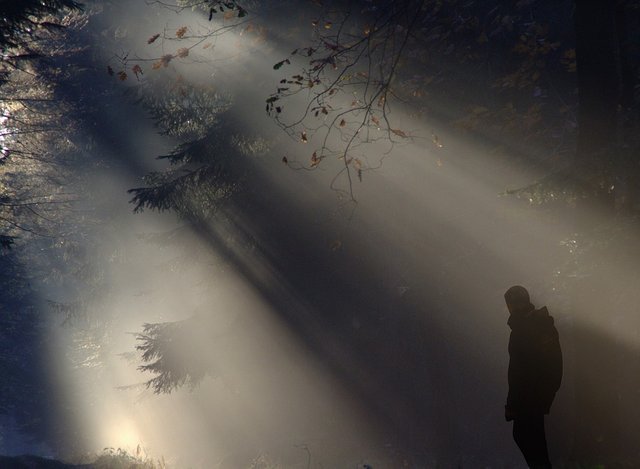
Source: pixabay
![CAM00488[1].jpg](https://steemitimages.com/DQmfZaQjFnQH9ZFpWG3BSxdLQ3x8V859J2h4ZYyLunxCf8Q/CAM00488%5B1%5D.jpg)
Euclid did not address the nature of light rays but Hiro Alexandre had some comments about it, where he considered that light rays are moving very quickly from the eye to the visible and reflected on the smooth surfaces.
Everything in the world radiates in every direction!, This theory developed by jacob Ibn Isaac Elkanadi in the Islamic age helped many other Muslim scientists to research in optics. Ibn al-Haitham achieved remarkable progress in this field by focusing on experiments to ascertain the theories and hypotheses. He was able to explain the nature of light and vision to a certain extent after studying the Greek theories and benefited from it, one of the most famous works of Ibn al-Haytham is "the book of optics", Ibn al-Haytham also proved that vision occurs only when the reflected rays of light come from an object that has light to the eye.
Isaac Newton also contributed to the addition of theories of optics after the addition of his new theory on light, and also gave a relationship between light and color in his book (the new theory on light), which presented a study on the analysis of white light from the sun after the experiment to analyze the sun By the prism in 1966.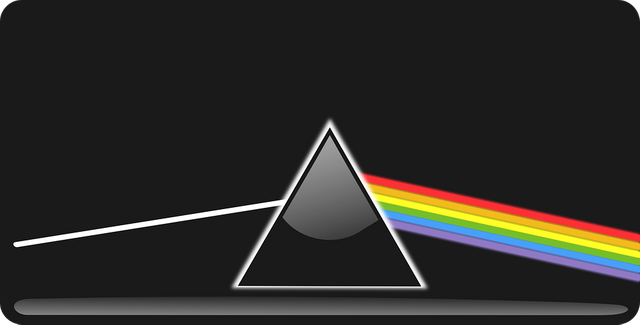
Source: pixabay
Isaac Newton also made the white light from the colors of the rainbow by Newton's Disc. He was the first to discover that white light was composed of an infinite number of colored rays in rainbow colors.
In the Middle Ages John Beckham wrote his book [perspectiva communis] which was one of the most prominent books of optics at the time, John focused in this book on the mechanism of vision, Beckham's and Bacon's work received considerable attention, especially after the invention of Rodger Bacon for printing and their works was a major addition to the progress of optics. In addition to these scientists, theodoric physiography obtained the first mathematical analysis of the rainbow.
In 1822 the first camera was designed after relying on the theories of scientists who were before, most notably Henry Fox Talbot, the English, who was able to extract the image after being placed in chemical solutions, Then came the companies producing cameras such as Fuji films in 1934, and in 1937 Polaroid issued an instant camera with black and white images.
Laser was invented in 1822 and the first color photograph was obtained by physicist James Maxwell in 1861.
SUN AND COLORS:

Source: pixabay
As we have said before, the main source of white light is the sun, but what is the relationship of white light to color?
White light is a group of colors that combine to form the spectrum of the sun. The white light consists of seven main colors, which are the colors that appear to the eye when forming a rainbow, so we can say that colors are linked directly to the white light.
Source: pixabayPrism and separation white light:
The prism reflects white light in the same way that white light reflected by the water atoms in the air to form a rainbow. Newton's experience of analyzing light through the triangular prism helped to obtain the main colors that make up white light, which are the seven spectrum colors or the basic colors:
Red, orange, yellow, green, blue, indigo, violet.
Scientists explain that rainbow colors are formed because all the waves in the vacuum are moving at the same speed, but when these waves move from vacuum to a transparent medium, their velocity differs from each other because of the difference in wavelength.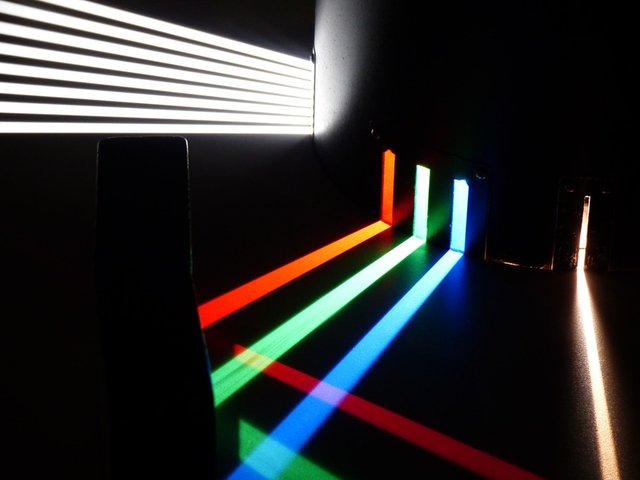
Source: pixabayThe sun appears yellow, orange, or red, although it emits white light! How can this happen?

Source: pixabay
Whether it's the color of the blue sky or the changing colors of the sun, it's all connected to the Earth's atmosphere, which is penetrated by sunlight before it reaches us. What gives us the impression that the sky is blue is the dispersion of blue radiation in all directions and more intense than the other color radiation as it penetrates the atmosphere, where other color radiation is spread according to straight lines, as opposed to blue radiation which is dispersed in all directions due to air particles and small particles of dust in the atmosphere and if the atmosphere does not exist, the sky will appear black and the stars will become visible in broad daylight.
The sun does not show the same red color when sunrise and sunset, because of the conditions of the atmosphere passing through the sun because these conditions vary from time to time, and all this is linked to seasons and weather conditions and other things such as dust and pollution and the evening air is often less purity Of the morning air, leading to a great scattering of light in the evening.
...................................................................................TO BE CONTINUED
Réferences list:
1
2
3
4
5
6
7
Dear steemians:
- thank you for reading.
- If you like this post upvote and follow To be informed of upcoming posts.
- If there is any comment, criticism or additional information, please write it down.
@Benainouna
good jib thank you
you welcom
Thank you very much for sharing this beautiful and serious text. I'm delighted with your blog! Every honor and all the best from me :)!
you welcom, and thank you for the nice words :) , i'm sure we will learn too much from each other, see you arround ;)
Yes, I agree completely with you! And I'm sure it will be so :). All the best :)!
Resteemed to over 15200 followers and 100% upvoted. Thank you for using my service!
Send 0.200 Steem or 0.200 Steem Dollars and the URL in the memo to use the bot.
Read here how the bot from Berlin works.
We are happy to be part of the APPICS bounty program.
APPICS is a new social community based on Steem.
The presale was sold in 26 minutes. The ICO will start soon.
Read here more: https://steemit.com/steemit/@resteem.bot/what-is-appics
@resteem.bot
Congratulations @benainouna! You have completed some achievement on Steemit and have been rewarded with new badge(s) :
Click on any badge to view your own Board of Honor on SteemitBoard.
For more information about SteemitBoard, click here
If you no longer want to receive notifications, reply to this comment with the word
STOP